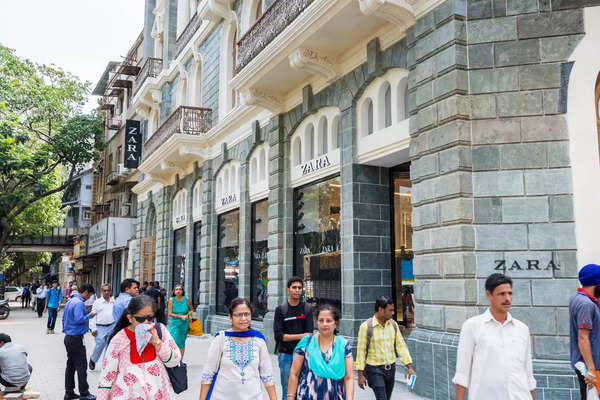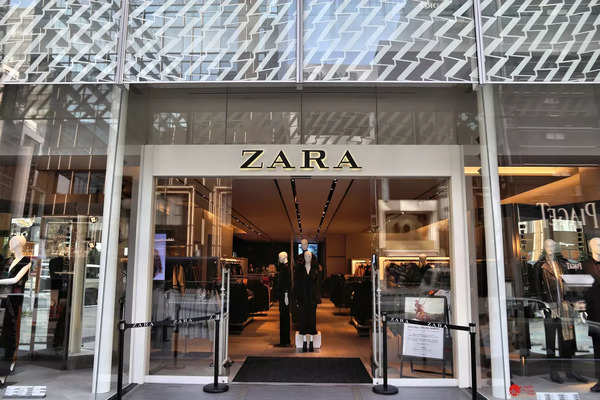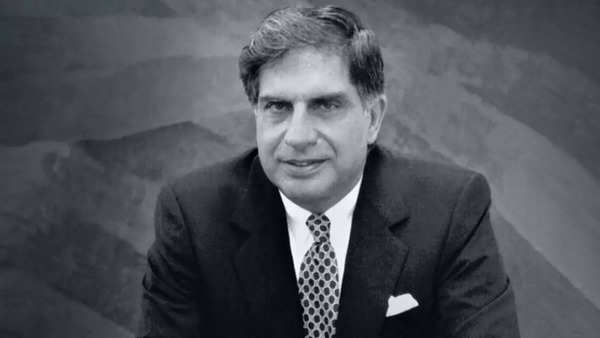There are very few names in the books on modern India’s business and retail history that will carry more iconic weight than Ratan Tata. His name often went hand-in-hand with the words ‘visionary leadership, an ability to look ahead and gauge potential for markets, and his drive to fundamentally alter the nature of industries.’ It thus speaks volumes that the legacy of Tata rests beyond his chairmanship of the Tata Group.On many counts, such as that of culture and international tastes, one of the profoundst impacts he left on the country was India’s romance with global fashion.
For all the instances of the Spanish giant, fast-fashion name, Zara, that appears so ubiquitous today in India, its journey here was anything but inevitable. It was a vision of a Tata that saw the latent potential in India’s growing middle class and the upcoming demand for international fashion. His strategic foresight did not only bring Zara to India but also laid down the foundation for a global fashion revolution in a country that had been wrapped in traditional styles and local retailers for years. Tata was the catalyst that completed all gaps between India’s heritage wealth and the globalized world of fashion.
Retail scenario in India before Zara
Indian retail, as a concept, has undergone a sea change since the entry of Zara in 2010. While international luxury high-end brands like Louis Vuitton, Gucci, and Chanel easily sowed their roots in metropolitan cities like Mumbai and Delhi, the right to fashionable, affordable clothing remained a luxury most middle-class Indians had not experienced yet. The local, family-managed concerns, small independent boutiques, and the traditional, richly cultural garments that define the diversity of Indian heritage remained at the heart of the fashion landscape. Global trends in fashion were experienced far-off—through magazines, international travels, or expensive shopping trips abroad.
At the same time, India saw its economy transform. It marked the beginning of a major boom for the Indian middle class with high disposable incomes, an aspirational consumer base, and malls and retail outlets having proliferated across the country. During that great era of economic growth, Indian consumers started to yearn for modern, stylish options that reflected the global fashion trends to which they were getting ever-growing exposure. It was clear that there was a hunger for something new-in this case, a cocktail of the international and the local-and this gap had to be filled.
It is against this backdrop that Ratan Tata could well envision, understanding fully the shifting economic landscape of India, how a brand like Zara might make its way into the Indian market. Zara was not a brand but a philosophy for looking at fashion-the global, yet fast, affordable and premium-positioned within an affordable range to common people.
This led the Tata Group’s visionary thought of making India adopt something hitherto considered a western phenomenon in a sustainable manner. As a result of that, one of the most crucial retail revolutions in the history of India has been staged.

The Tata-Inditex tie-up: How Zara came to India
Of course, Ratan Tata would not be given any lesser place in being the catalyst for bringing Zara to India. The Tata group, as part of this alliance with Inditex-the Spanish parent company of Zara-really played a monumental role in making entry into the Indian market successful. The collaboration was a master stroke—a combination of deep knowledge by Tata of the business landscape of India with the global expertise of Inditex in fast fashion.
This was one of the most important contributions Tata made-to understand the regulatory landscape as well as consumer behavior in India, and he leveraged his power to ensure that Zara could negotiate this complex local business environment. The negations done over India’s FDI regulations were most crucial since regulations regarding foreign retail in India were quite strict, requiring foreign companies to form partners with local entities. Tata made this partnership with Inditex not difficult and not to the detriment of law, where Zara’s entry was more smooth with a vital aspect of making the brand ready for the long term.
Of course, Tata’s leadership ensured that the entry of Zara was not just a commercial transaction but a cultural one. He understood that for Zara to establish itself in India, it had to appeal to Indian consumers and yet maintain its global identity. Under Tata’s tutelage, Zara was positioned as a global fashion brand with local sensibilities. The international DNA of this brand remained intact, but every single offering was carefully curated to suit Indian tastes and preferences.
In remembrance: Ratan Tata, the visionary who transformed Indian fashion and retail
Why are the CEOs of most luxury brands stepping down?
Zara’s entry in India: A game changer
When Zara opened its first store in New Delhi in 2010, it opened not just a new store but began a retail revolution. The Indian consumers from an era of traditional shopping were suddenly introduced to a new world of fashion-ones that moved at lightning speed. Zara revolutionized the fast-fashion model; changes on the runway could hit shop floors within weeks. Fashion’s old cycles were much slower in such a country.
Tata’s influence turned Zara not among those few silhouettes of the luxury elite but, instead, made it reach the middle class. It became a brand with which young, aspirational Indians could identify-a brand that was offering not just affordable fashion but an aspirational lifestyle as well. The stores were based in prime locations: high-end malls in cities such as Delhi, Mumbai, and Bengaluru. This ensured easy accessibility for the urban, upwardly mobile middle class.
Since the Indian customer craves for style, speed, and value, that is why Zara has been a success here. For the first time shoppers within the country could realize access to international trends, without having to go abroad, and be able to experience the excitement of always up-to-date collections in stores from Zara. Zara’s business model, rapid design, manufacture, and delivery cycles was exactly what was required by the Indian market as escalations in instant gratification demands over fashion.

Legacy of Zara in India: Revolutionising India’s fast-fashion revolution
Ratan Tata did not just want to bring Zara to India; he wanted to innovate an entire retail and fashion industry through this change. Other global fast-fashion brands, including H&M, Uniqlo, and Forever 21, also emulated Zara’s success and entered the Indian market in the following years. This combined the business acumen of Tata with Inditex, and the floodgates of international brands opening into the Indian retail space made this country change its fashion landscape.
Success also came at a cost for local fashion retailers, making them scramble for the real sharp competitor edge. Indian retailers, whether small or big, needed to change their business models considerably. They had to go in for faster cycles of production, tighter control over supply chain operations, and more globalised fashion trends to keep up in an increasingly competitive market. In short, Tata’s vision did not merely clear a room for Zara but led a whole generation of Indian fashion retailers to up-need and keep pace with international standards.
In addition to business transformation, Zara was a cultural icon. It promised the urban shopper in India globality and modernity. Zara wasn’t selling clothes; it was selling a lifestyle-one to the young, cosmopolitan generation that wants to look stylish and modern without squandering a lot of money. The brand became tantamount to urban sophistication and global consciousness of fashion.
The other implication of Zara in India was a change in the expectations of the consumers. Hazy, slow-fashion cycles Indian shoppers had been used to with traditional retailing companies started demanding instant access to the latest trends. What Indian shopper was previously not accustomed to, the fast-fashion brands fulfilled. The appetite for quick, cheap fashion grew, and with this, other fast-fashion brands came up in India. Zara lit the fire of a change in fashion consumption that spread to all the nook and corners of the country, from the streets of Delhi to the malls of Mumbai.

Ratan Tata mortal remains to be kept at NCPA
Ratan Tata’s lasting influence in Indian fashion industry
It is much more than Ratan Tata’s influence in India because of Zara’s entry. It is a complete sea-change that befell India retail and consumer map. Tata was one of the most important sites for global retail majors, and Zara was one of the very first dominoes to fall during this transformation. With his unique understanding of consumer needs in India, his ability to forge international partnerships, and his visionary approach to business, Tata built a foundation for a fashion revolution that will continue to change the face of the Indian retail sector for years to come.
This legacy continues to remain profound and deeply rooted within the Indian fashion and retail markets even after Tata’s exit from Tata Group. The success of Zara in India and more widely of other international brands in India owes a great deal directly to the vision of Tata of a future in which India was not just a market but a dynamic and vibrant player in world fashion. His influence went well beyond business and was to affect how Indians perceived fashion, the value of accessible fashion, and embracing international trends.

Tata Group has maintained its position as India’s most valuable brand, with a value of $28.6 billion (Rs 2.3 lakh crore), marking a 9 percent increase from the previous year. Infosys secures the second spot, while HDFC Group has surged to third place in the ‘India 100 2024’ ranking by Brand Value. The annual report evaluates over 250 Indian brands across various sectors to determine their brand value and market influence.
Today, Zara is one of the biggest fashion retailers in India and what could well go down in history as a telltale sign of the strategic foresight of Ratan Tata, to bring in a fast-fashion giant like Zara and upturn the fashion sense of this generation, making the world come to India for fabulous clothing.
This is not just about introducing a global brand; rather, it is a new era born whereby Indian consumers are part of a larger interspersed global fashion ecosystem. His legacy will inspire not only business leaders but an entire nation of fashion-conscious consumers who now stand at the intersection of tradition and global trends-all thanks to Tata’s vision.


